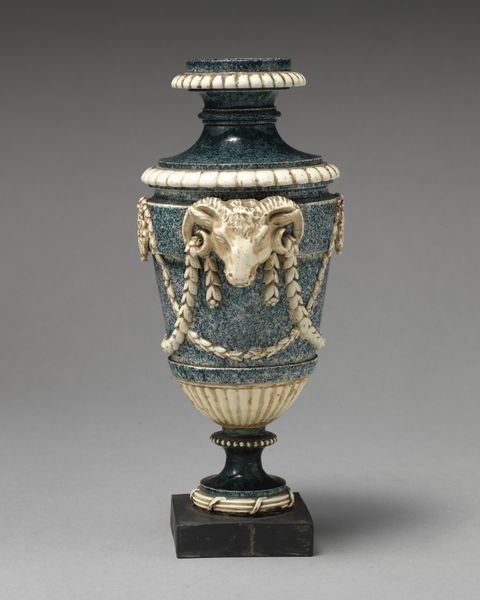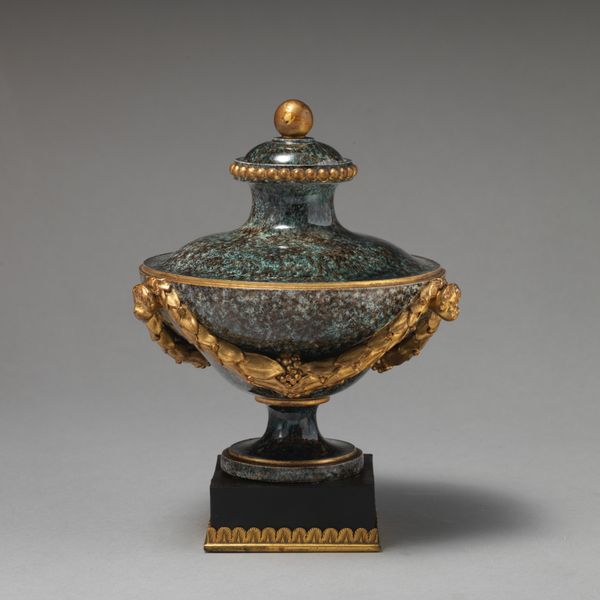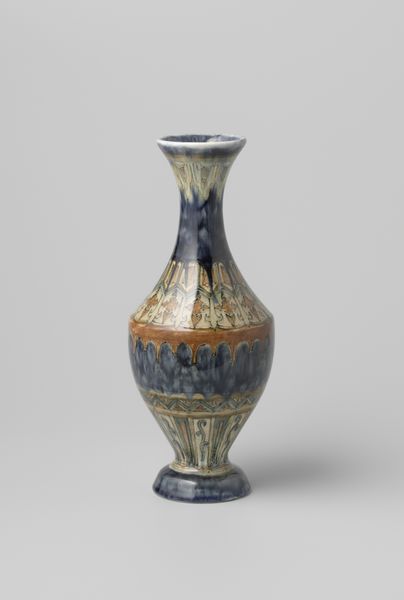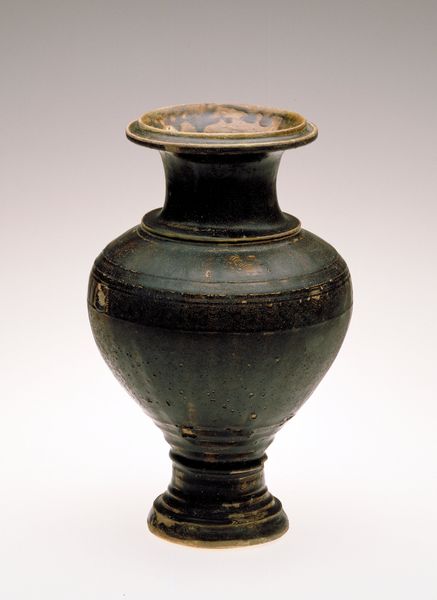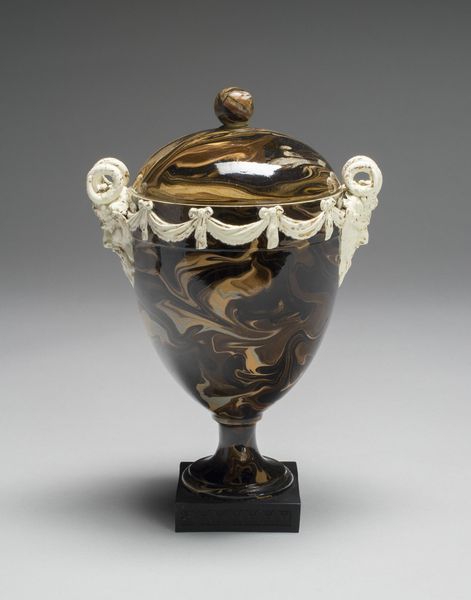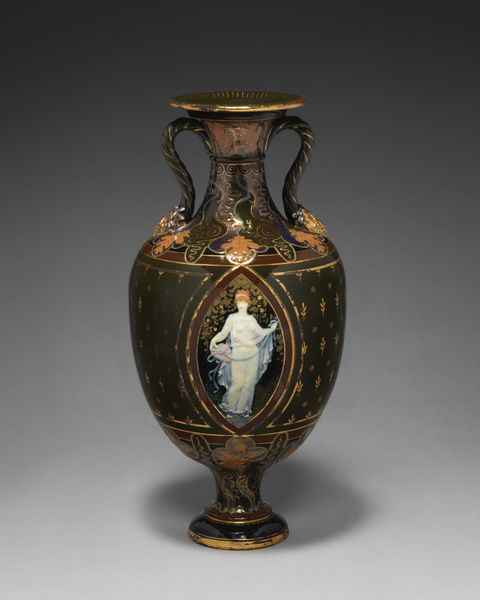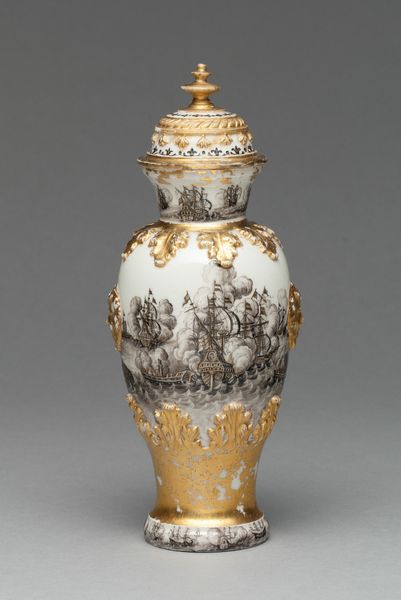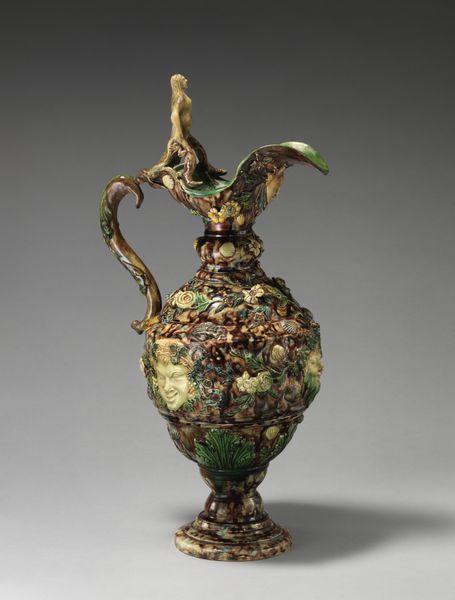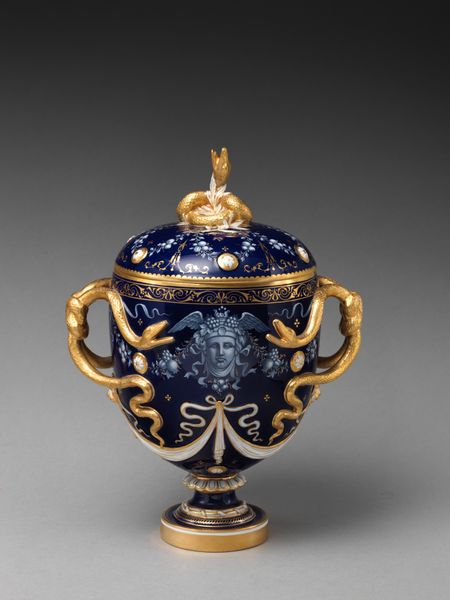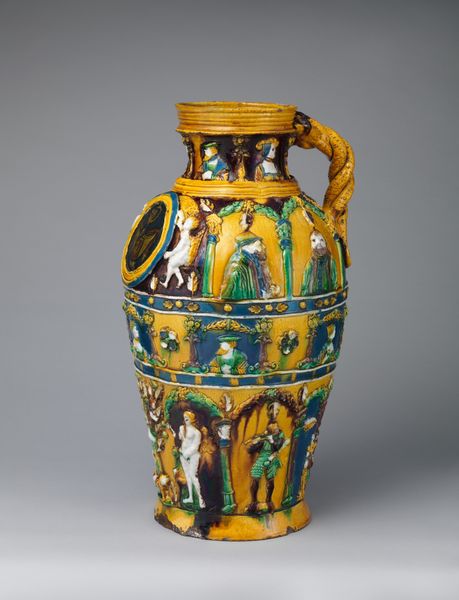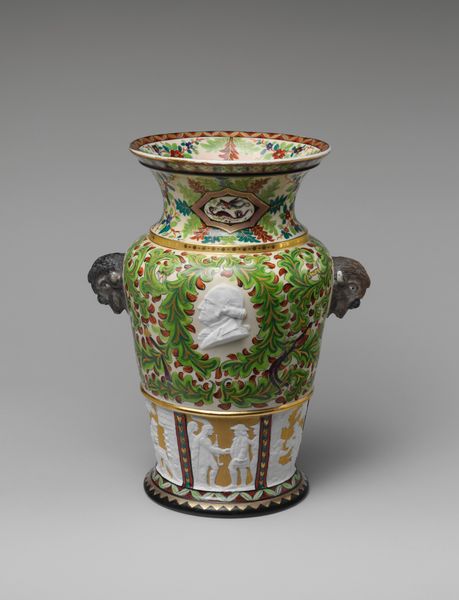
ceramic, sculpture
#
neoclacissism
#
ceramic
#
classical-realism
#
sculptural image
#
sculpture
#
ceramic
#
decorative-art
Dimensions: Height (each): 9 1/2 in. (24.1 cm)
Copyright: Public Domain
This vase was made by Humphrey Palmer in England around 1775 from creamware, a type of refined earthenware. Notice the blue-grey ground color, achieved by adding cobalt to the clay. It's decorated with applied reliefs of swags, rosettes, and ram's heads, all rendered in contrasting cream-colored clay. Creamware was developed in the mid-18th century as a cheaper alternative to porcelain, catering to the growing middle class. The smooth surface of creamware was ideal for mass production through molding. Here, you can see that the artisan has pressed clay into molds to create repeating decorative elements. These motifs, inspired by classical antiquity, were meant to evoke luxury and refinement, but were now made accessible through industrial production. This vase reflects the increasing demand for decorative objects during the Industrial Revolution, and the rise of consumer culture. Appreciating such objects requires an understanding of how materials and processes contributed to their social and cultural significance.
Comments
No comments
Be the first to comment and join the conversation on the ultimate creative platform.
